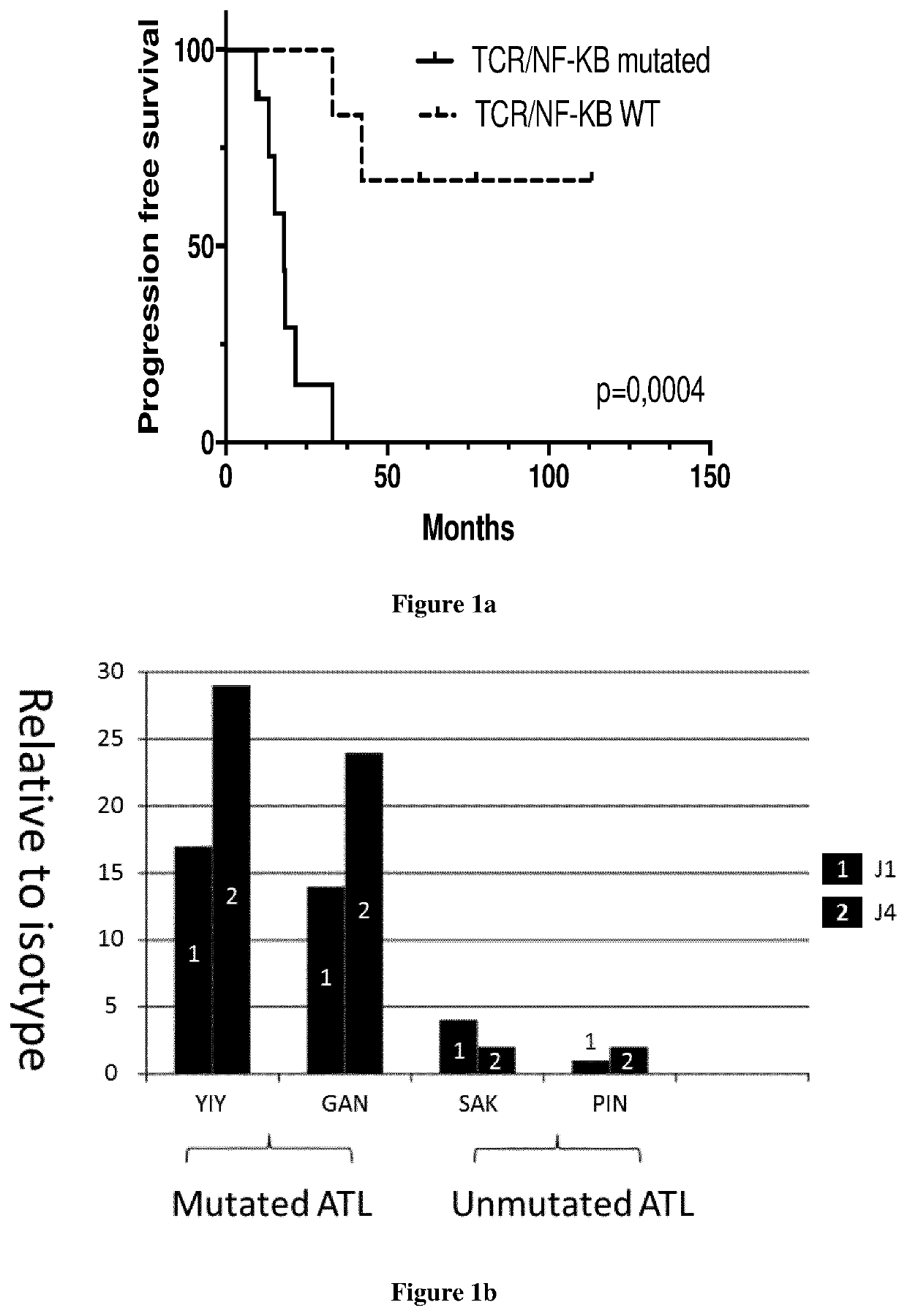Methods for the treatment of adult t-cell leukemia/lymphoma
a technology for t-cell leukemia and lymphoma, applied in the field of medicine, can solve the problems of poor long-term survival, poor prognosis of patients with aggressive atl (acute and lymphoma subtypes), and poor full transformation
- Summary
- Abstract
- Description
- Claims
- Application Information
AI Technical Summary
Benefits of technology
Problems solved by technology
Method used
Image
Examples
example
[0041]We performed an integrated genomic analysis of a retrospective cohort of 62 ATL patients mainly originating from Africa and the Caribbean area. This task was achieved by targeted deep sequencing, SNP array analysis, RNA sequencing and high throughput sequencing (HTS) based mapping of proviral integration sites. The genomic landscape in ATL from these populations overlaps with slight modifications with the genomic alterations observed in ATL from Japan (Kataoka K et al (2015) Nat Genet 47:1304-1315). Interestingly, a subset of mutations (e.g. activating mutations in the NOTCH and JAK / STAT pathways) is shared with T-ALL. Moreover, most of these genetic alterations were not restricted to ATL lymphomagenesis but are common to other non-viral peripheral T-cell lymphomas. Genomic alterations found in ATL were clustered in three main pathways: 46 (74%) patients harbored alterations affecting the TCR / NF-κB pathway (PLCG1, CARD11, PRKCB, CBLB, IRF4, CSNK1A1, FYN, RHOA, VAV1); 26 (42%) ...
PUM
 Login to View More
Login to View More Abstract
Description
Claims
Application Information
 Login to View More
Login to View More - R&D
- Intellectual Property
- Life Sciences
- Materials
- Tech Scout
- Unparalleled Data Quality
- Higher Quality Content
- 60% Fewer Hallucinations
Browse by: Latest US Patents, China's latest patents, Technical Efficacy Thesaurus, Application Domain, Technology Topic, Popular Technical Reports.
© 2025 PatSnap. All rights reserved.Legal|Privacy policy|Modern Slavery Act Transparency Statement|Sitemap|About US| Contact US: help@patsnap.com

